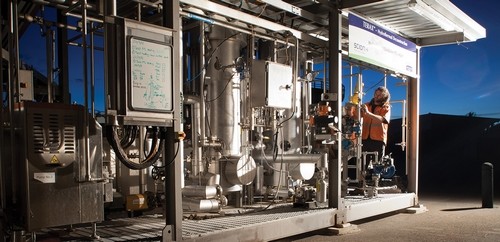Hydro-tech toilets - reinventing how we do the business
Scion was recently awarded a grant of approximately $400,000 from the Bill & Melinda Gates Foundation to reinvent the toilet using the hydrothermal processing expertise we have developed for the woodprocessing and municipal waste sectors.
Hydrothermal oxidation is one of the processes behind TERAX™, the unique and cost-saving technology to treat biowaste as a recyclable resource.
Research Leader for Clean Technologies, Dr Daniel Gapes, says Scion was asked to submit a late application for the Gates Foundation’s Reinvent the Toilet Challenge following colleague John Andrew’s presentation on the technology at the International Water Association’s Leading Edge Technologies conference in Abu Dhabi, United Arab Emirates, in 2014. The challenge is now on for our Clean Technologies Team to design and build a prototype toilet by September 2016.
Scion’s is one of 20 toilet design challenges underway across the globe in the next 12 months.
“Our task is to create a toilet that removes pathogens from human waste, is off the grid without connections to water, sewer, or electrical lines, costs less than five cents (US) to use per person a day, and recovers valuable resources such as clean water and energy,” says Daniel.
“We’re very much at the start-up phase of this design. Our aim is to apply our hydrothermal oxidation, or wet oxidation, technology on a much smaller and simplified scale. Basically, we’re looking at packaging wet oxidation in a can.”
Hydrothermal oxidation uses high pressure, temperature and oxygen to break down, or ‘pressure cook’ biosolids into simpler organic compounds, releasing energy and chemicals.
“One of the first things we’re doing is concocting a model human waste product to feed into our mini hydrothermal reactor, enabling easy initial concept testing,” says Daniel. “But we will be moving reasonably quickly to using ‘the real deal’, as working with human waste is what the challenge is all about.”
Daniel says simplicity is key to this project. “We want to design something that can be used by developing countries to improve sanitation. It’s that piece of technology beneath the toilet doing the business.”
